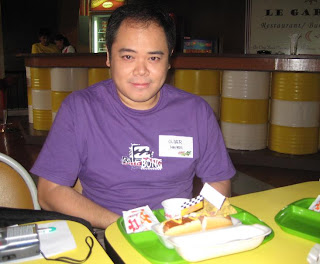
(Feb. 19, 2007, PDI-Entertainment)
By Oliver M. Pulumbarit
Contributor
Acclaimed filmmaker Darren Aronofsky (“Requiem for a Dream”) returns with the dramatic but patience-testing “The Fountain,” a dreamlike piece which speaks of undying love and the setbacks of mortality, among other things.
Overly ponderous and existential, the film finely presents Aronofsky as an artist who doesn’t shy away from experimentation, and one who imbues his work with thought-provoking substance. But it’s also like an abstract painting that’s hard to get clear and obvious meaning from, and the complicated tale it tries to tell gets muddled along the way.
It’s immediately established, however, that two lovers are at the center of it. Tommy (Hugh Jackman), a well-meaning but reckless scientist, defiantly tries to stave off the impending death of his cancer-stricken wife Izzi (Rachel Weisz). Discovering the regenerative properties of a previously untested substance after he and his team used it on an ailing monkey, Tommy becomes optimistic that Izzi can be miraculously healed, as well.
Enter Izzi’s notebook, which contains a story she’s been writing, about the adventures of a Spanish conquistador captain, Tomas (also played by Jackman). Tomas, Izzi writes, has been tasked by the Queen (also played by Weisz) to go on a special quest.
It’s not really and conclusively explained if Izzi’s fictional story is based on actual accounts of a past life, but her time shared with her husband leads one to assume that these events, as well as the repeated mention of symbolic and/or mystical elements like the Fountain of Youth and the Tree of Life, are no coincidence. But then, there’s a third character played by Jackman, a bald, levitating, zen-like being in a floating bubble who contemplates life, death and similarly heavy things. Who that guy is exactly, we’re not exactly and clearly told, but he pops up repeatedly with a parallel story about related heartaches.
According to the movie’s production information, that’s Tom, a 26th century astronaut (yes, you read that right) who’s trying to cope with the elusive mysteries that have plagued him in the past. This character’s scenes are accompanied by flashy, sparkly special effects, and while his presence in the movie offers a third perspective that further questions the limits of mortal relationships, it’s hard to accept him as more than an imaginary figure in a totally trippy, starlit environment.
Had it been convincingly explained who this 26th century character was, it may have made him more valuable and less pretentious. Still, there are visual tricks that make him blend in and become integral to the bigger story, and his surreal, puzzling drama is soon rivaled by that of the 16th century conquistador’s.
The three time-separated men--Tomas, Tommy, Tom--are creatively interconnected, and strongly personified by Jackman, but you need to read the production notes after to really make sense of the whole shared-quest thing. The special effects-aided imagery and the time-jumping narrative make Aronofsky’s story confusing and truly head-spinning by the end. On the one hand, “The Fountain” challenges its viewers to think and grasp for feasible resolutions; on the other, you only vaguely get that it’s about acceptance and letting go.




















